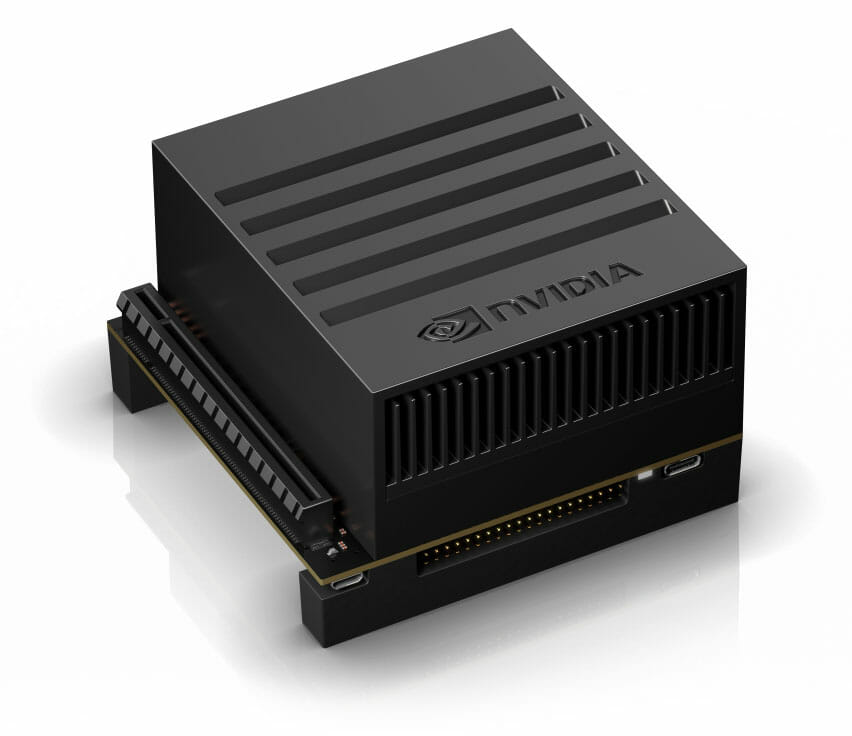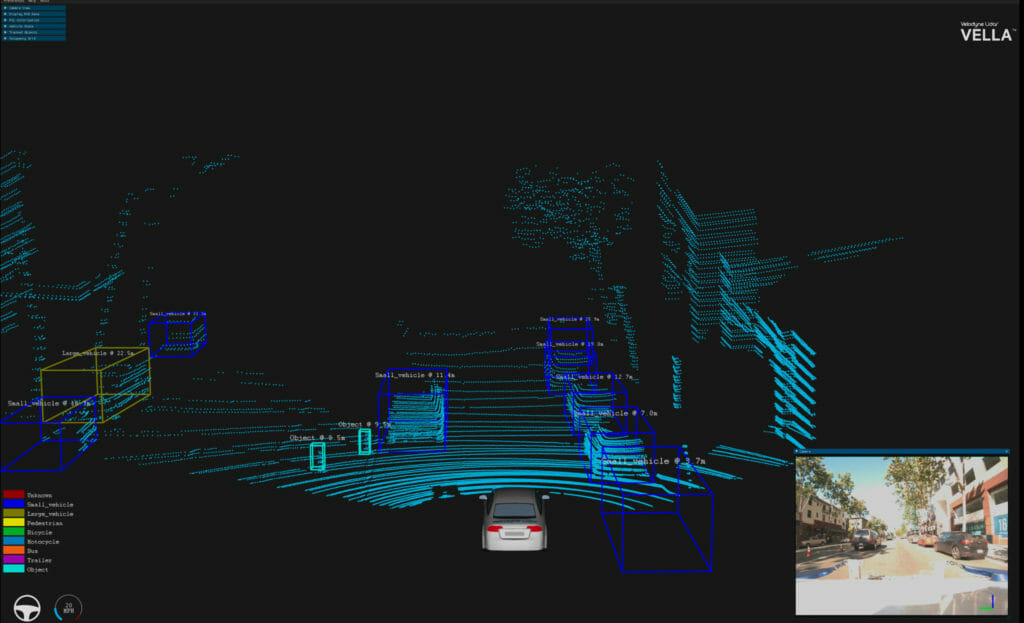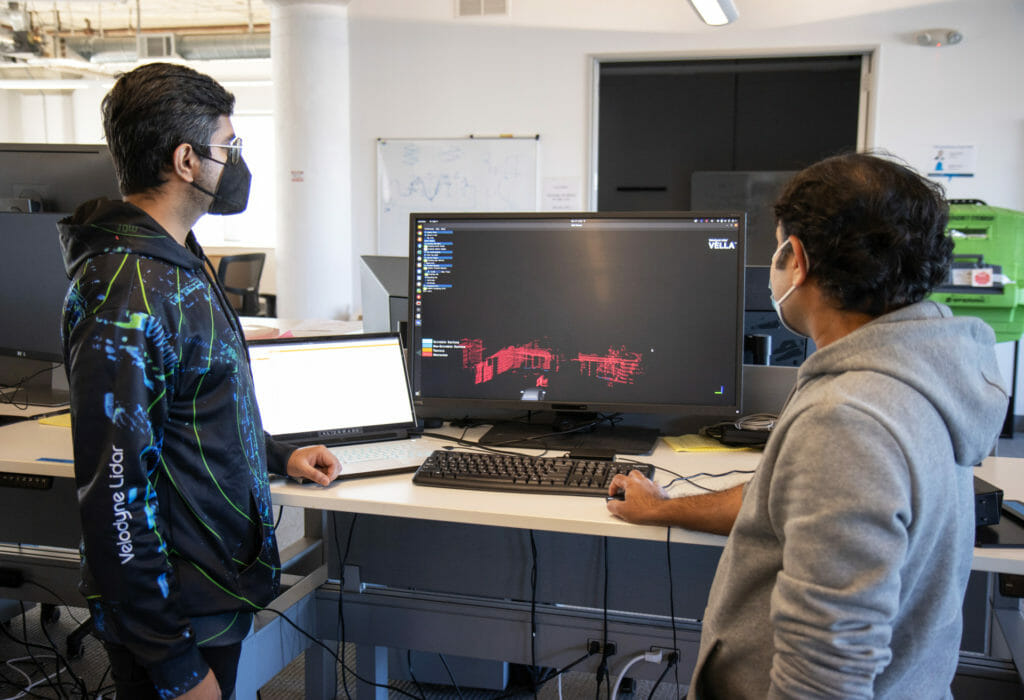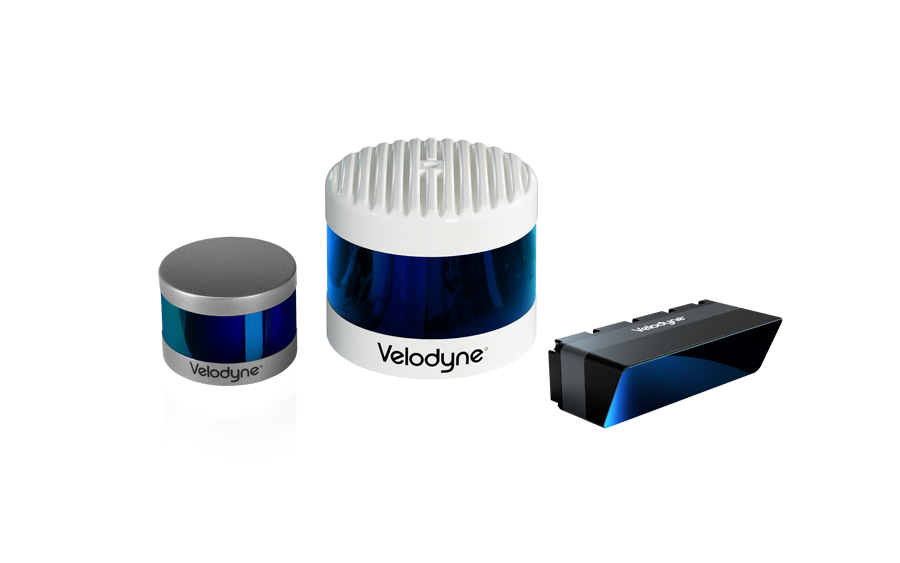
The VDK provides access to our breakthrough Vella perception software, paired with our world-class lidar sensors. The software toolkit demonstrates Velodyne’s software capabilities, allowing customers to plug in our lidar with an off-the-shelf library of functions.
The VDK advances solution development and accelerates time to market for bringing cutting-edge lidar capabilities to autonomous vehicles, advanced driver assistance systems (ADAS), mobile delivery devices, industrial robotics, drones and more.
Since its introduction, customers have used the VDK for short-range pedestrian detection, cross-reference and fusion with camera-based perception for ADAS applications, collision avoidance for industrial applications and more.
Included among the new VDK features are:
Most of our robotics and automotive customers are targeting ARM-based platforms along with a low-powered graphical processing unit (GPU) due to the smaller form factor as well as low power requirements. With VDK support on AGX, customers can directly integrate Velodyne’s lidar perception in their applications now on smaller platforms such as industrial automated guided vehicles (AGVs) and autonomous mobile robots (AMRs). It’s challenging to maintain high accuracy and fidelity of different capabilities while optimizing the run-time performance on lower powered devices. With continuous optimizations of our algorithms, VDK in the coming releases will be supported on additional low-powered compute platforms.


The new release of the VDK further demonstrates our commitment to supporting customers through the entire autonomous solution development lifecycle, from testing and evaluating sensors, to building initial proofs of concept, to demonstrating complete applications. It also shows how we are continuing to enhance to the VDK so developers and integrators have ongoing access to Velodyne innovations.

Velodyne Lidar (Nasdaq: VLDR, VLDRW) ushered in a new era of autonomous technology with the invention of real-time surround view lidar sensors. Velodyne, a global leader in lidar, is known for its broad portfolio of breakthrough lidar technologies. Velodyne’s revolutionary sensor and software solutions provide flexibility, quality and performance to meet the needs of a wide range of industries, including robotics, industrial, intelligent infrastructure, autonomous vehicles and advanced driver assistance systems (ADAS). Through continuous innovation, Velodyne strives to transform lives and communities by advancing safer mobility for all.